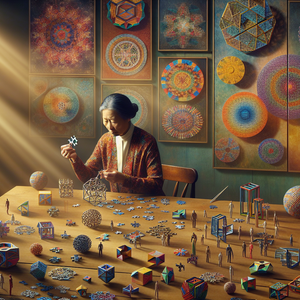The Dance of the Peacock: Courtship and Mating Rituals

At the heart of the peacock's courtship is the breathtaking display of its tail feathers, or trains. When a male peacock seeks to attract a mate, he fans out his train in a mesmerizing spectacle that can be both visually and audibly captivating. This dance is not merely for show; it serves several essential functions. The vibrant colors and intricate patterns of the peacock's plumage are indicators of the male's health and genetic fitness. Research has shown that female peafowls are more likely to choose mates with more elaborate displays, as these traits often correlate with superior genes. A study published in the journal *Animal Behaviour* found that females preferred males with larger trains and more eyespots, suggesting a link between visual appeal and genetic quality. The dance itself is equally significant. A male peacock performs a series of movements—shaking, turning, and strutting—designed to showcase his feathers in the best light. This performance can last several minutes, during which the male emits a range of calls to entice the female further. The combination of visual and auditory signals creates a captivating courtship ritual that highlights the peacock's unique adaptations.
Evolutionary Advantages of Extravagance
The evolution of such extravagant traits as the peacock's tail can be explained through the theory of sexual selection, a concept introduced by Charles Darwin. According to this theory, traits that may seem disadvantageous for survival (like a large, colorful tail) can actually be advantageous in attracting mates. The peacock's extravagant tail serves as an honest signal of the male's fitness; only the healthiest individuals can afford to produce and maintain such a cumbersome appendage. Studies have shown that these displays can deter competition as well. Males that successfully attract females not only mate more frequently but also solidify their position within social hierarchies. For instance, research conducted by the University of California, Berkeley, demonstrated that in areas where male peacocks exhibited more elaborate displays, they experienced higher rates of mating success, reinforcing the idea that flamboyance can be a strategic advantage in reproductive competition.
Courtship Beyond the Dance
While the visual display is critical in attracting females, the courtship process extends beyond a mere dance. Mating rituals can last several days, during which males continue to showcase their plumage and vocalize to maintain the female's interest. Peacocks often form small groups, creating a social environment where multiple males display their traits simultaneously. This dynamic adds layers of complexity to the courtship process, as females can assess various options before making their choice. Intriguingly, the mating rituals of peacocks also involve mutual preening and physical closeness, which further strengthen the bond between mating pairs. After selecting a mate, the female often leads the male to a secluded area for mating, underscoring the importance of choice and agency in the reproductive process.
The courtship and mating rituals of peacocks exemplify the artistry and complexity of nature. Through their vibrant displays and elaborate dances, male peacocks engage in a multifaceted process that not only secures their genetic legacy but also showcases the wonders of evolution in action. As we continue to study these magnificent creatures, we gain deeper insights into the intricate connections between beauty, selection, and survival in the animal kingdom. The peacock's dance is more than just a performance; it is a profound expression of life, love, and the relentless pursuit of excellence in the natural world. Understanding these rituals not only enriches our appreciation for peacocks but also deepens our understanding of evolutionary biology and the myriad ways in which life adapts and thrives.
Wildlife Biologist
National Park Service, Wildlife Conservation Society, Environmental NGOs
Core Responsibilities
Conduct field research to observe and document animal behaviors, particularly in mating and courtship rituals.
Analyze data and publish findings in scientific journals, contributing to the understanding of evolutionary biology.
Collaborate with conservation organizations to develop strategies for protecting species and their habitats.
Required Skills
Strong analytical skills with proficiency in statistical software (e.g., R, SPSS).
Excellent communication skills for writing reports and presenting findings.
Fieldwork experience and knowledge of ecological principles.
Behavioral Ecologist
Academic institutions, research laboratories, governmental wildlife agencies
Core Responsibilities
Study the interactions between animals and their environments, focusing on mating behaviors and social structures.
Design and implement experiments to test hypotheses related to sexual selection and mating systems.
Publish research results and engage in public outreach to raise awareness about species conservation.
Required Skills
Proficiency in observational research techniques and data collection methods.
Strong background in ecological theory and evolutionary principles.
Ability to work independently and as part of a multidisciplinary team.
Animal Behaviorist
Zoos, animal sanctuaries, research institutions
Core Responsibilities
Assess and interpret animal behaviors, particularly in captive or rehabilitative settings, to improve welfare and breeding success.
Develop enrichment programs that enhance natural behaviors in animals, focusing on species like peacocks and other birds.
Work with veterinarians and conservationists to address behavioral issues in endangered species.
Required Skills
Background in psychology, biology, or zoology, with a specific focus on animal behavior.
Hands-on experience with animal training techniques and behavior assessment.
Excellent observational skills and the ability to communicate findings effectively.
Conservation Geneticist
Research universities, conservation organizations, biotechnology firms
Core Responsibilities
Analyze genetic data to understand the health and diversity of animal populations, including mating success and genetic fitness.
Collaborate on conservation projects to preserve genetic diversity within species, particularly in regards to reproductive strategies.
Conduct field studies that investigate the impact of environmental changes on genetic variation and mating behaviors.
Required Skills
Strong foundation in genetics and molecular biology, with experience in laboratory techniques.
Proficiency in bioinformatics tools and software for genetic analysis.
Ability to interpret complex data and communicate findings to a non-scientific audience.
Evolutionary Biologist
Universities, research institutes, governmental agencies focused on biodiversity and conservation
Core Responsibilities
Conduct research on evolutionary processes, focusing on sexual selection and mating behaviors across various species.
Develop theoretical models to explain the evolution of traits such as the peacock's tail, incorporating ecological and genetic factors.
Teach courses and mentor students in evolutionary biology, fostering the next generation of scientists.
Required Skills
Deep understanding of evolutionary theory and statistical modeling.
Strong research skills, with a history of published work in peer-reviewed journals.
Ability to collaborate with interdisciplinary teams on complex biological questions.


